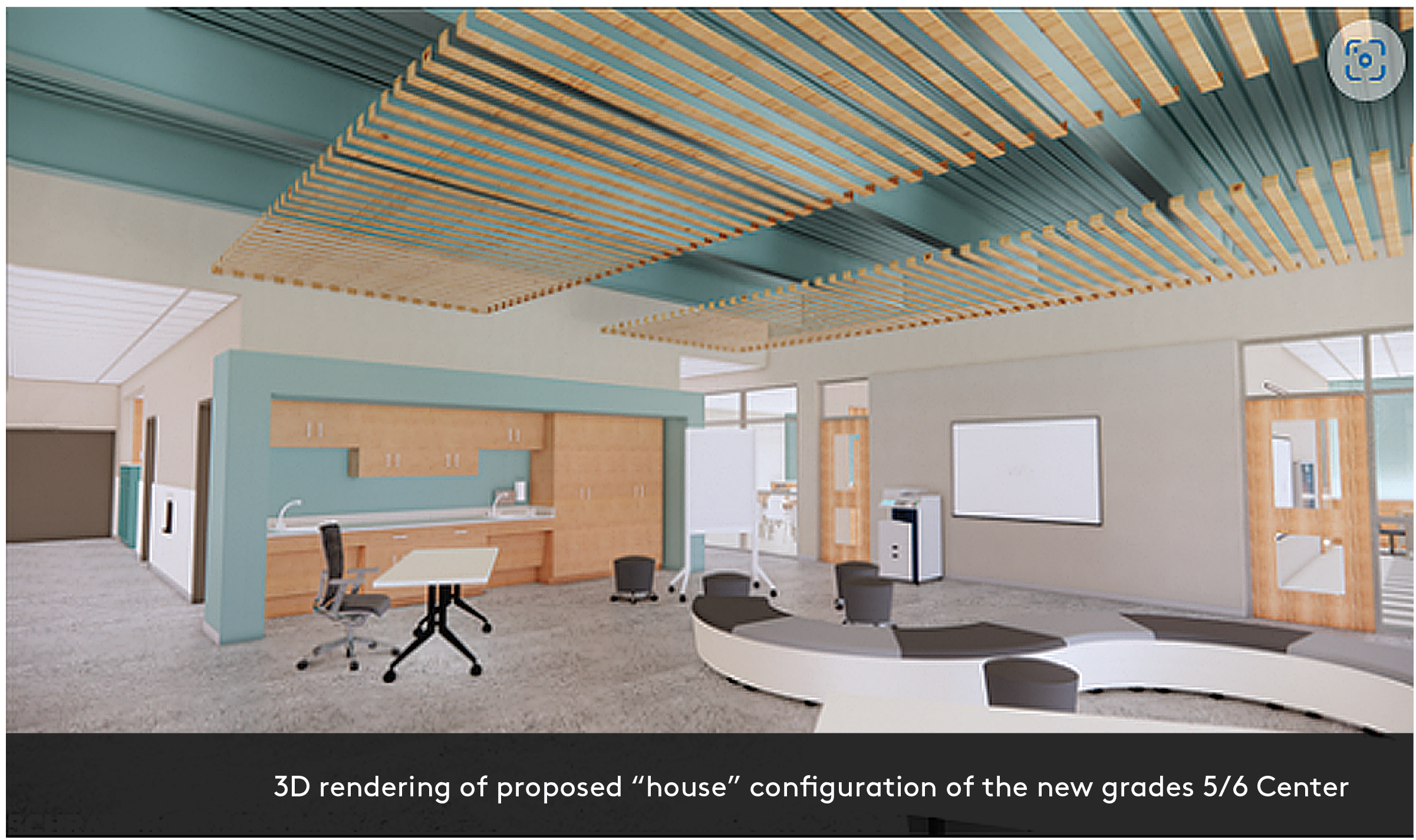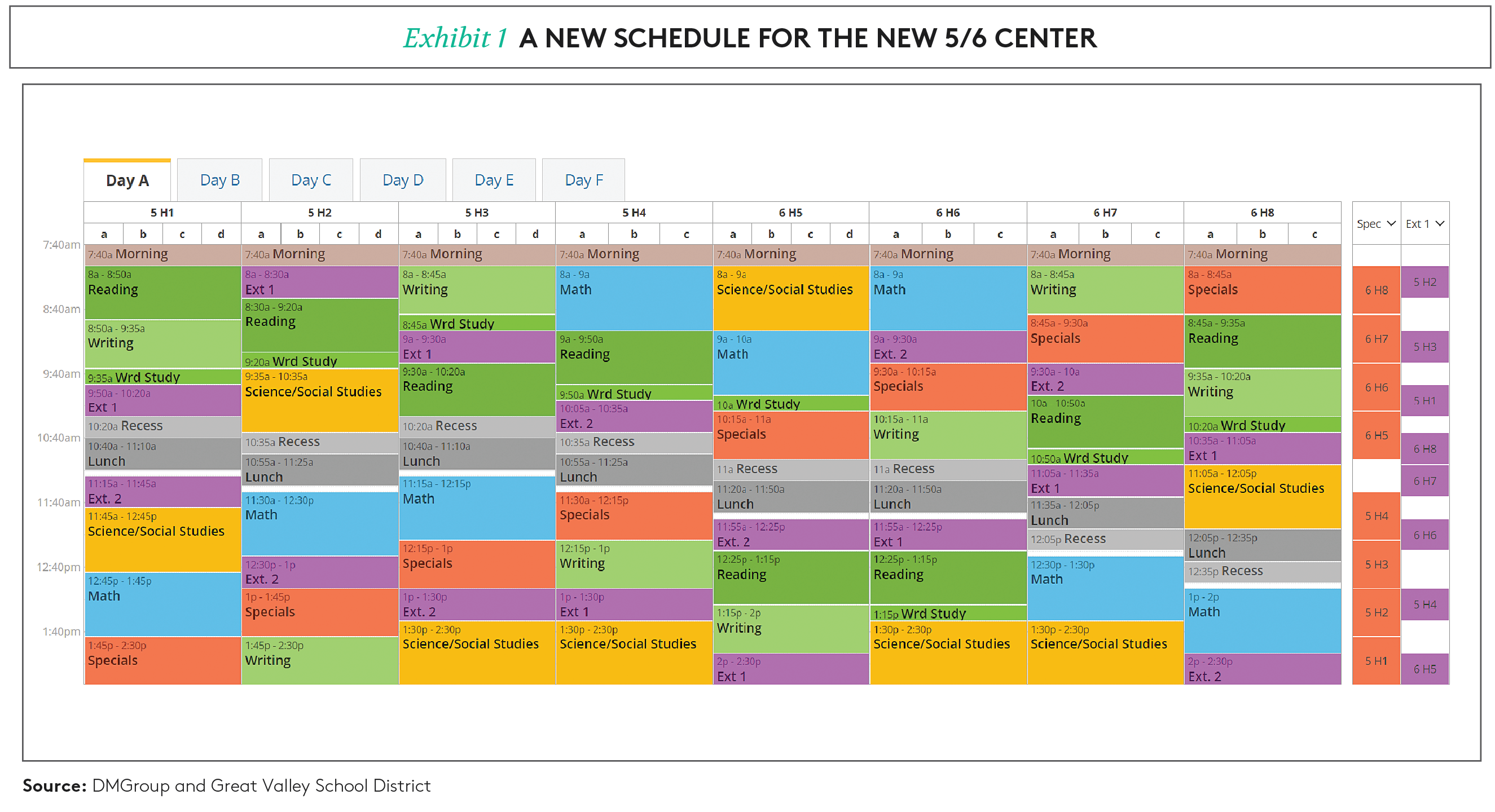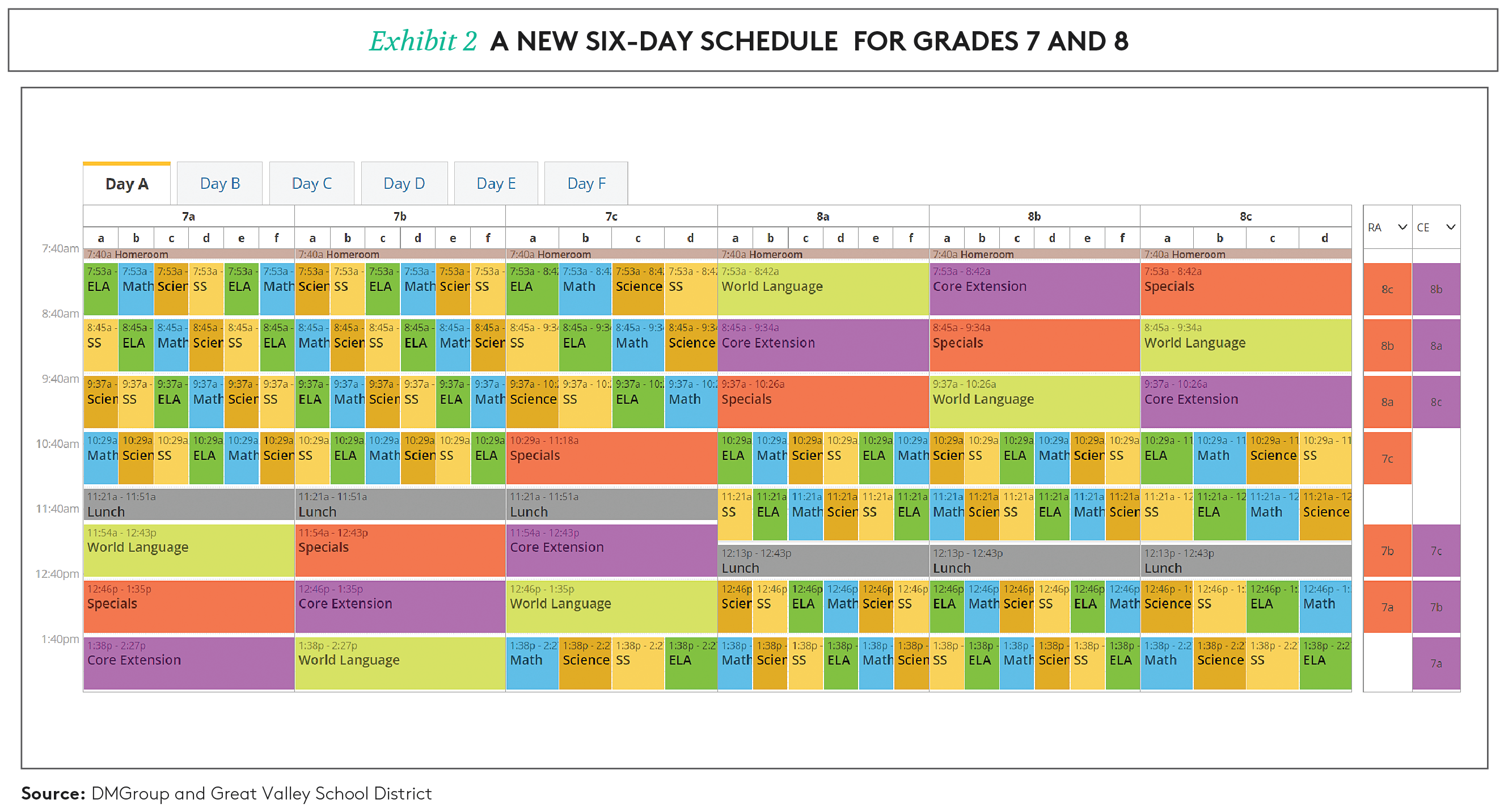Facing steady increases in enrollment, Great Valley School District (GVSD) commissioned a study which confirmed that the district would soon be facing infrastructure limitations. After exploring alternatives and engaging the community, the district reached a decision to build a new campus for grades 5 and 6; fifth-grade students would be shifted out of the elementary schools and sixth-grade students out of the middle school.
While district leadership was energized about the potential of this configuration to enhance supports for students, its implementation would involve much planning and would mean a tremendous amount of change—creating a completely new school configuration for grades 5 and 6, and reconfiguring middle school staff and students’ schedules. Of course, all this had to be managed within staffing and budget limitations.

Having previously partnered successfully with District Management Group (DMGroup) to design its elementary schedules and maximize staffing efficiency, Superintendent Daniel Goffredo contacted DMGroup in 2021 to help think through the details of this new challenge. He asked DMGroup to examine staffing needs and help design schedules that would realize the full potential of this new configuration.
Establishing Clear Objectives and Identifying Challenges
DMGroup’s scheduling team was energized to partner again with the district and help them work creatively to design the most effective and efficient solutions. Working closely with Superintendent Goffredo, Assistant Superintendent for Educational Services Stephen O'Toole, Director of Student Services Andrea Dinsmore, and Director of Teaching and Learning Tricia Beck, DMGroup’s scheduling team began by gaining a very clear understanding of the district’s objectives, non-negotiables, and aspirations.
The New 5/6 Center
The existing schedules for grades 5 and 6 were completely different from each other because grade 5 was hosted in the elementary building and grade 6 was in the middle school building. The new 5/6 Center offered the opportunity to reimagine school for these students. District leadership sought to achieve the following:
• Adopt a self-contained classroom model where each classroom stays with the same homeroom teacher through the day (except for specials).
• Create a “house” configuration as a collaborative team environment of three to five teachers and their classrooms. Although classrooms would be self-contained, the house configuration would introduce students to more of a middle school team model with shared common space.
• Include dedicated core extension / intervention time for reading and math, maximizing the time and talent of literacy specialists, ESL staff, and gifted staff.
• Ensure teachers have opportunities to collaborate.
The 7/8 Middle School
One of the most challenging areas was reimagining the middle school schedule. The district wanted to ensure they would retain existing structures and programs that worked well while using the opportunity to implement recommendations from a previous secondary school review conducted by DMGroup; namely, they wanted to increase core instructional time and introduce more choice in course selection for students.
The goals for grades 7 and 8 were as follows:
• Increase core instructional minutes
• Enhance remediation and enrichment (core extension) opportunities for all students
• Preserve structures that build community and provide safe spaces
• Allow for student voice and choice (electives)
• Maintain focus on the whole child
• Align and integrate content to connect learning across subject areas
Partnering to Develop Solutions
With these objectives and challenges clearly articulated, the DMGroup team worked with the district to brainstorm innovative solutions and iterate through various models. Using DMGroup’s powerful scheduling software, DMSchedules, the team was able to model various scenario configurations, and then compare and contrast their impact on staffing and discuss the various pros and cons.
District leadership and the DMGroup team arrived at solutions that would enable the district to achieve their objectives. Here we share some of the key features.
5/6 Center
To meet the objectives for the 5/6 Center, the district decided to create four “houses” per grade, with each house consisting of three or four classrooms following the same schedule (Exhibit 1). This would allow for the following benefits:
• Students could be regrouped by need across each house during interventions and small-group instruction;
• Future increases in attendance could be accommodated by increasing houses from three to four classrooms;
• Each house could have common planning time opportunities every day during specials;
• Two periods of intervention/extension/enrichment could be included and staggered by grade; and
• Staggered reading and math by grade would allow push-in support during small-group instruction by allowing staff to “flood” each grade throughout the day.

7/8 Middle School
For grades 7 and 8, a key challenge was that the large number of classrooms—16 per grade—did not lend itself to the traditional four-teacher team model with each teacher focusing on one subject across four classrooms (ELA, math, science, social studies). Furthermore, incorporating a core extension/intervention block and the opportunity for students to select from multiple language choices, band, orchestra, or other electives without requiring more staff seemed daunting initially.
Given the need for 16 classrooms per grade, district leadership and the DMGroup team explored multiple models and determined that the best solution was to have two teams of six classrooms and one team of four classrooms at each grade level, on a six-day schedule (Exhibit 2). This provided the following benefits:
• Requiring six periods of specials, six periods of core extension, and six periods of language each day maximizes staff time, as the contractual daily teaching load is six periods;
• Switching from eight periods per day to seven increased periods from 43 to 49 minutes;
• Some teachers teach across the six-teacher teams to fully utilize all staff rather than fractional FTEs;
• The six-day cycle allows for a two-day focus on ELA, two days on math, and two days on electives, providing balance between academics and discovery;
• Music lessons and ensembles are provided as electives, no longer requiring all intervention periods scheduled at the end of the day (where music students would miss interventions);
• The core extension periods are staggered by grade to maximize support staff effectiveness throughout the day; and
• Scheduling world language, core extension, and specials at the same time across the grade provides flexibility for electives and band.

Moving Forward
District leadership was very pleased with the schedules that had been developed as they had achieved all the key objectives that had been articulated. They had greatly enjoyed the creative problem-solving process they had gone through with the DMSchedules team. Particularly empowering was the ability to quickly generate a variety of scenarios, examine the impact for students and staff, and discuss tradeoffs. “DMGroup assisted with one of our biggest challenges—time. While we have staff capable of designing schedules, DMGroup gathered our priorities, took time to draft models for us to evaluate and adjust. [...] Their involvement allowed us to meet our deadline for sharing schedules with our community a full school year or more prior to implementation,” commented Assistant Superintendent for Educational Services O'Toole.
What had seemed like an overwhelming task was accomplished with relative ease and on time, giving the district the lead time they desired to prepare for the changes ahead. “Our goal was to have a schedule model a full year in advance of the opening of our 5/6 Center. That would allow us time to anticipate any challenges prior to implementing the schedule. This also allows our Board of School Directors and our community to become familiar with the schedule in advance of implementation,” added O’Toole.
In terms of staffing impact, the modeling enabled the district to fully leverage the time and talents of existing staff to provide opportunities for electives and student supports. The modeling is also helping the district to plan for the hiring of additional positions to address increasing enrollment.
The district is looking forward to the 2024-2025 school year when the new 5/6 Center will open and the changes at the middle school will simultaneously be launched. Not only will they be prepared to handle increases in enrollment, but the new schedules are allowing them to improve their supports and opportunities for all students, aligned with district priorities.

